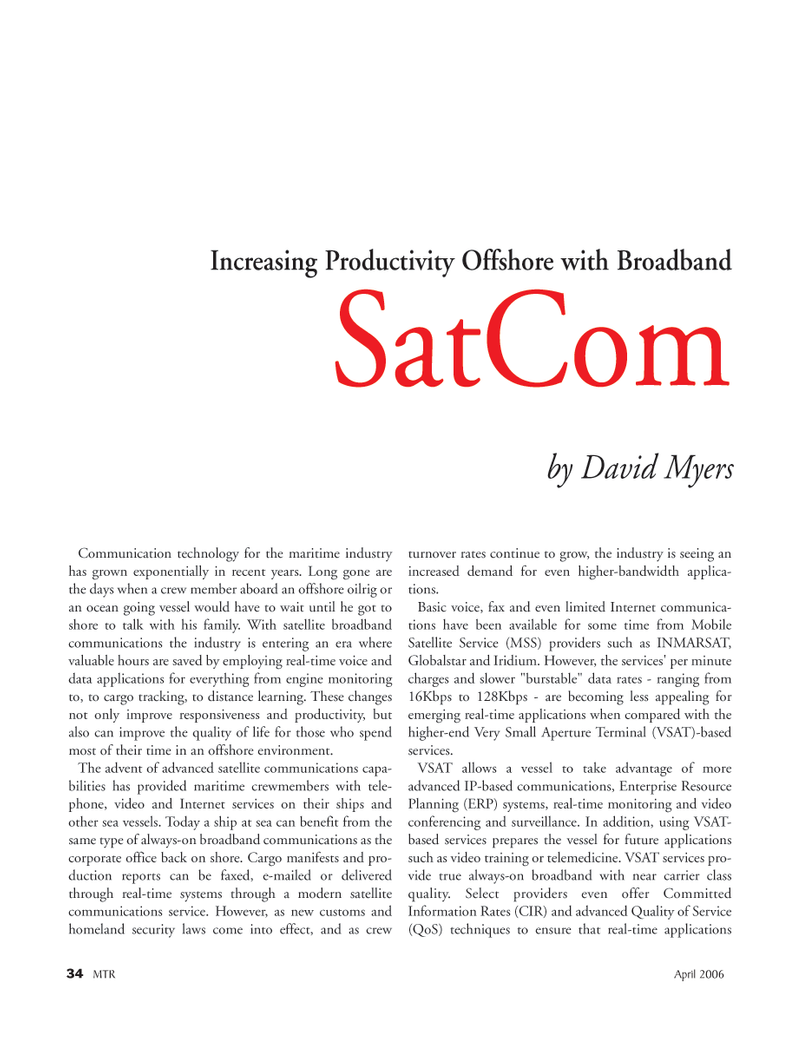
Page 34: of Marine Technology Magazine (April 2006)
The Offshore Technology Edition
Read this page in Pdf, Flash or Html5 edition of April 2006 Marine Technology Magazine
Communication technology for the maritime industry has grown exponentially in recent years. Long gone are the days when a crew member aboard an offshore oilrig or an ocean going vessel would have to wait until he got to shore to talk with his family. With satellite broadband communications the industry is entering an era where valuable hours are saved by employing real-time voice and data applications for everything from engine monitoring to, to cargo tracking, to distance learning. These changes not only improve responsiveness and productivity, but also can improve the quality of life for those who spend most of their time in an offshore environment.
The advent of advanced satellite communications capa- bilities has provided maritime crewmembers with tele- phone, video and Internet services on their ships and other sea vessels. Today a ship at sea can benefit from the same type of always-on broadband communications as the corporate office back on shore. Cargo manifests and pro- duction reports can be faxed, e-mailed or delivered through real-time systems through a modern satellite communications service. However, as new customs and homeland security laws come into effect, and as crew turnover rates continue to grow, the industry is seeing an increased demand for even higher-bandwidth applica- tions.
Basic voice, fax and even limited Internet communica- tions have been available for some time from Mobile
Satellite Service (MSS) providers such as INMARSAT,
Globalstar and Iridium. However, the services' per minute charges and slower "burstable" data rates - ranging from 16Kbps to 128Kbps - are becoming less appealing for emerging real-time applications when compared with the higher-end Very Small Aperture Terminal (VSAT)-based services.
VSAT allows a vessel to take advantage of more advanced IP-based communications, Enterprise Resource
Planning (ERP) systems, real-time monitoring and video conferencing and surveillance. In addition, using VSAT- based services prepares the vessel for future applications such as video training or telemedicine. VSAT services pro- vide true always-on broadband with near carrier class quality. Select providers even offer Committed
Information Rates (CIR) and advanced Quality of Service (QoS) techniques to ensure that real-time applications 34 MTR April 2006
Increasing Productivity Offshore with Broadband
SatCom by David Myers
MTR#3 (33-48).qxd 4/7/2006 11:15 AM Page 34

 33
33

 35
35
